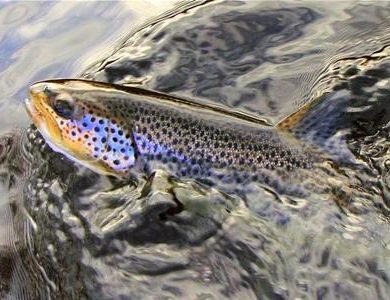Source: East Yorkshire Rivers Trust / Institute of Fisheries Management
Salmon and sea trout from the North Sea will create Yorkshire’s most valuable fishery worth at least £12.5 million a year – in a river barred to them for nearly 40 years.
A barrage on the River Derwent, at Barmby on the Marsh, will be opened eight hours a day from Saturday May 24 instead of always being closed. It will allow thousands of salmon and sea trout migrating along the Ouse from the sea to enter the 72-mile river and its tributaries.
East Yorkshire Rivers Trust which masterminded the Derwent scheme, estimates anglers will now catch 500 salmon and 1,400 sea trout in the river each year.
“That will add £12.5 million to the local economies in Ryedale and districts along the river,” said John Shannon, the trust’s Derwent restoration project officer.
The Derwent is Yorkshire’s largest river system covering 2,057 square kilometres (794 square miles) and is ideal for spawning.
The barrier at Barmby was built in the mid 1970s where the river joins the Ouse near Drax Power Station, to help abstract water. It effectively closed off the river to the Ouse and migrating fish because its boat lock, the only way through for fish, was only opened occasionally.
The last time salmon were reported in any numbers in the Derwent was 1976 at Stamford Bridge.
Mr. Shannon said leaving the boat lock open eight hours a day would still safeguard the water supply. “But with more fish each year there will eventually be ten times more anglers further increasing the benefit to the local economy.”
The opening ceremony will include an eel stocking when thousands of baby eels will be released. Other fish populations in the river including flounder, lamprey and shad are also expected to increase.
The Derwent opening is one of 250 events worldwide marking the first World Fish Migration Day; twenty involve new fish passages like that on the Derwent, and include removal of a complete dam in a Japanese river. The aim is to raise awareness that freshwater migratory fish need free flowing rivers.
At present Yorkshire’s most valuable river is the Esk where anglers land 200 salmon and 600 sea trout each year.
East Yorkshire Rivers Trust will be partnered at the opening by the Institute of Fisheries Management, the Environment Agency, Natural England and Yorkshire Wildlife Trust. Space at the opening is limited and anyone wishing to attend should e-mail Mr. Shannon at john345shannon@btinternet.com to reserve a place.

